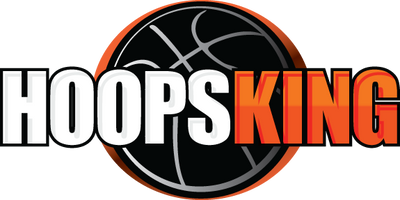
Chris Oliver
(Rental)-Chris Oliver's Basketball Decision Training
$44.99
Decision Training: Unleashing Basketball IQ and Game-Changing Skills
Introduction
Welcome to our comprehensive guide on Decision Training, a cutting-edge approach to basketball skill development that will take your team's performance to new heights. In this article, we will delve into the intricacies of Decision Training, providing you with expert insights, advanced techniques, and detailed breakdowns to help you outperform your opponents on the basketball court. Whether you're a coach, player, or basketball enthusiast, this guide is your key to unlocking the full potential of Decision Training.
Understanding Decision Training
Decision Training is a revolutionary method that focuses on enhancing basketball IQ, decision-making skills, and situational awareness. This innovative approach goes beyond technical drills and places players in realistic game scenarios, challenging them to make split-second decisions and execute the most effective actions. By implementing Decision Training, your team can gain a significant advantage by developing a deeper understanding of the game and making smarter decisions on the court.
Key Principles of Decision Training
1. Realistic Game Scenarios
Decision Training places players in realistic game scenarios to replicate the pressures and challenges faced during actual games. This includes simulating various offensive and defensive situations, such as fast breaks, pick-and-rolls, and defensive rotations. By experiencing these scenarios in practice, players develop the ability to make quick and accurate decisions under pressure.
2. Read and React
The Read and React principle is a central component of Decision Training. Players learn to read the defense, anticipate actions, and react accordingly. This involves recognizing defensive rotations, identifying passing lanes, and making intelligent choices based on the given situation. The focus is on teaching players to think critically and make effective decisions in real-time.
3. Skill Integration
Decision Training integrates technical skills seamlessly with decision-making abilities. Players are encouraged to apply their shooting, passing, dribbling, and defensive skills in the context of game situations. This integration ensures that decision-making and execution go hand in hand, allowing players to make the most effective plays based on their skill sets.
Implementing Decision Training
To successfully implement Decision Training, teams must focus on key strategies and techniques. Let's explore some of the essential elements that will enhance your team's performance:
1. Game-Realistic Drills
Design game-realistic drills that challenge players to make decisions in high-pressure situations. Create scenarios that replicate game dynamics, incorporating offensive and defensive actions. For example, set up drills where players must make quick decisions on whether to shoot, pass, drive, or defend based on the movements of defenders and teammates.
2. Film Study and Analysis
Incorporate film study and analysis as a vital part of Decision Training. Review game footage to identify decision-making opportunities, discuss different options players could have chosen, and analyze the outcomes. This process helps players develop a deeper understanding of the game, learn from their mistakes, and make more informed decisions in future situations.
3. Simulated Game Play
Engage in simulated game play to provide players with realistic decision-making experiences. Organize scrimmages or controlled game situations where players can apply the decision-making skills they have learned. This allows them to practice making split-second choices, communicating with teammates, and adapting to different game scenarios.
4. Mental Preparation and Visualization
Emphasize mental preparation and visualization techniques as part of Decision Training. Encourage players to visualize game situations, imagine themselves making the right decisions, and executing the desired actions. This mental rehearsal enhances their ability to make quick, accurate decisions on the court and reinforces positive decision-making patterns.
The Benefits of Decision Training
Implementing Decision Training offers numerous benefits that can elevate your team's performance and enhance their basketball skills. Let's explore some key advantages:
1. Improved Basketball IQ
Decision Training enhances players' basketball IQ by challenging them to think critically and make quick decisions in realistic game situations. Through repetitive exposure to these scenarios, players develop a deeper understanding of the game, anticipate actions, and make smarter choices on the court. This heightened basketball IQ translates into more efficient gameplay and a competitive edge over opponents.
2. Enhanced Decision-Making Skills
By incorporating Decision Training into your team's practice regimen, players develop enhanced decision-making skills. They learn to assess options, analyze the defense, and choose the most effective actions in real-time. This ability to make split-second decisions under pressure leads to improved game management, better shot selection, and heightened situational awareness.
3. Increased Game Awareness
Decision Training cultivates a heightened sense of game awareness among players. They learn to read the defense, identify open teammates, and exploit defensive vulnerabilities. This increased game awareness allows players to make timely passes, find scoring opportunities, and make defensive plays that disrupt opponents' strategies. The result is a team that is more in sync, anticipates plays, and maximizes scoring chances.
4. Enhanced Communication and Team Chemistry
Decision Training fosters effective communication and strengthens team chemistry. Players learn to communicate their decisions, provide feedback to teammates, and coordinate their actions on the court. This open line of communication enhances teamwork, builds trust, and creates a cohesive unit that operates with synchronicity. As a result, the team becomes more cohesive, making faster and more efficient decisions collectively.
5. Transferrable Skills
The skills developed through Decision Training are highly transferrable to game situations. The ability to make quick decisions, read the defense, and execute plays under pressure can be applied across various basketball scenarios. These skills not only benefit players during games but also in practice sessions and future basketball endeavors.
Conclusion
Decision Training is a game-changing approach that enhances basketball IQ, decision-making skills, and game awareness. By implementing the key principles, strategies, and techniques outlined in this guide, you will equip your team with the tools necessary to outperform opponents and maximize their basketball potential. Remember, mastering Decision Training requires practice, repetition, and a commitment to continuous improvement. So, embrace this revolutionary approach, unleash your team's decision-making prowess, and witness their transformation into intelligent, strategic players. The path to basketball excellence starts here!


